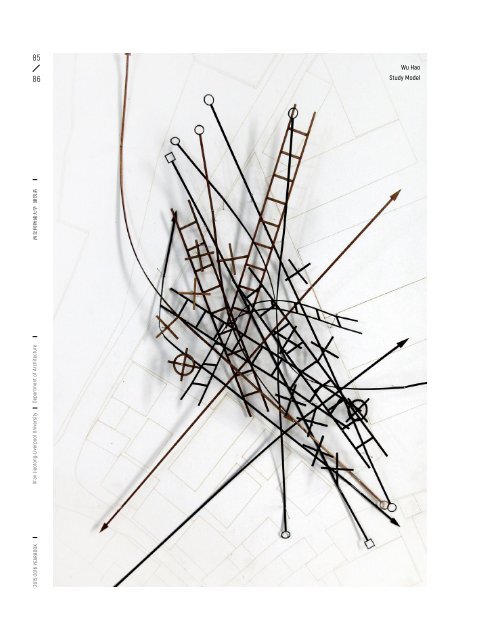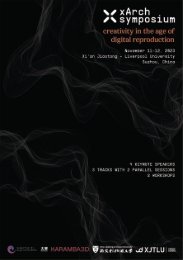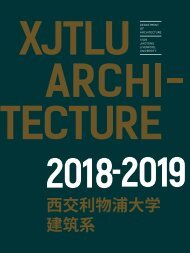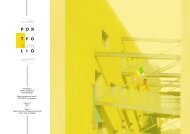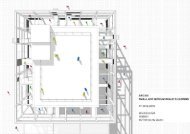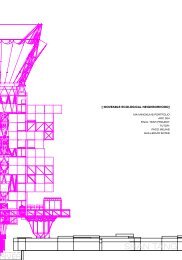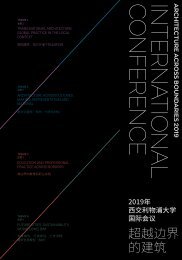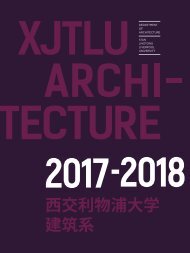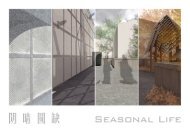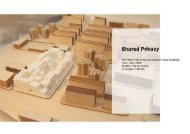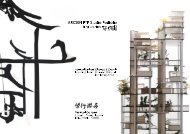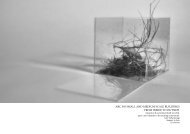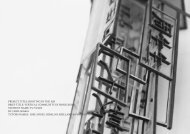YEARBOOK 2015 - 2016 | XJTLU DEPARTMENT OF ARCHITECTURE
The third edition of the yearbook of the Department of Architecture at Xi'an Jiaotong-Liverpool University presents student works created during the academic year 2015 - 2016. The yearbook exemplifies the new model for Chinese architectural education for which the department was commended by the Royal Institute of British Architects (RIBA) in their validation report for the Bachelor in Architecture. It is thus also a showcase of the creative culture that has guided our students in taking first steps to successful international careers as responsible and creative architectural designers.
The third edition of the yearbook of the Department of Architecture at Xi'an Jiaotong-Liverpool University presents student works created during the academic year 2015 - 2016. The yearbook exemplifies the new model for Chinese architectural education for which the department was commended by the Royal Institute of British Architects (RIBA) in their validation report for the Bachelor in Architecture. It is thus also a showcase of the creative culture that has guided our students in taking first steps to successful international careers as responsible and creative architectural designers.
You also want an ePaper? Increase the reach of your titles
YUMPU automatically turns print PDFs into web optimized ePapers that Google loves.
85<br />
86<br />
Wu Hao<br />
Study Model<br />
ARC204<br />
Design Studio<br />
Small Urban Buildings<br />
<strong>2015</strong>-<strong>2016</strong> <strong>YEARBOOK</strong> Xi’an Jiaotong-Liverpool University Department of Architecture 西 交 利 物 浦 大 学 建 筑 系<br />
Level 2<br />
( Year 3 | Semester 2 )<br />
Module Credits<br />
10<br />
Module Leader<br />
Ganna Andrianova<br />
Teaching Team<br />
Aleksandra Raonic<br />
Austin Williams<br />
Lina Stergiou<br />
Jose Angel Hidalgo Arellano<br />
Number of Students<br />
50<br />
Creative Hub. / Co-working Space in Suzhou<br />
Increasingly people today are not bound to work in traditionally structured<br />
office settings, but are free to work anywhere as a result of contemporary<br />
forms of digital communication and new technologies. This<br />
newfound freedom, however, often results in isolation, along with an<br />
inability to build trust and relationships with others, with restricted<br />
opportunities for collaboration and networking. One emerging solution<br />
to these drawbacks is co-working spaces: communal offices used by<br />
freelancers, start-uppers, digital nomads and remote workers which<br />
can be hired for flexible periods of time with varying fees. Co-working<br />
environments provide the necessary infrastructures for efficient work<br />
to take place and have the potential to offer a strong sense of community,<br />
with participation, however, not necessarily compulsory. Co-working<br />
spaces are, as a consequence, becoming increasingly popular work-place<br />
options worldwide, not only in western nations, but also in China.<br />
Set on the site of an existing wedding dress factory, slated for demolition,<br />
located close to Shantang Street in Old Suzhou, this design studio offers<br />
students the opportunity to develop a co-working space in an historical<br />
urban context, responding not only to the brief but to its site-specific<br />
conditions, with an emphasis on developing strategies for the re-use of<br />
existing industrial buildings.<br />
The design studio is a continuation of the International Architecture<br />
Workshop ‘Urban Conservation and Tourism along Shantang River’, held<br />
in February <strong>2016</strong> with students encouraged to engage with the ideas that<br />
were developed during the course of the workshop.<br />
Level 02 – Year 3<br />
B Eng Architecture Programme


